The theme of openness to those who have different opinions was central once again in Pope Francis’ homily at the Mass in the Ñu Guasu park on Sunday, as it had been on Saturday afternoon in the Leon Condou stadium.
This Sunday Mass in the 120-hectare park was an event where all were welcome and no special tickets were required. Huge numbers of people flooded into the area from Saturday on, and camped out all night, to secure a better position.
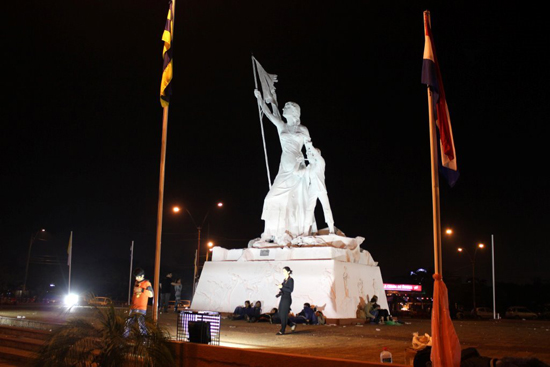
Above: pilgrims spending the night by the Ñu Guasu park rest at the foot of the famous statue “La Residenta” statue, showing the Paraguayan woman at the time of the Triple Alliance War – a theme frequently referred to by Pope Francis. Photo: Margaret Hebblethwaite
Francis called on the congregation to abandon an attitude to mission that relies on “plans and programs”, which was a frequent mistake, he said. People often behave “as if we could convert people on the basis of our own arguments”. But “in the mentality of the Gospel, you do not convince people with arguments, strategies or tactics. You convince them by learning how to welcome them.”
He made this more explicit: “The Church is the home of hospitality”, welcoming not only the poor and the sick, but also “welcoming those who do not think as we do”.
The Mass was accompanied by a range of magnificent church music – mostly traditional, but some new and popular – played by the Orquesta Sinfónica Nacional. But the most original and stunning artistic production was the huge "reredos" (pictured), 17 metres high and 40 metres wide, designed by Koki Ruiz. Its yellow and green colours came from 32,000 maize cobs and 200,000 cocos (small coconuts), while pumpkins provided flourishes, and a variety of brown, grey, white and yellow seeds were worked into a portrait of St Ignatius to the right of the altar, and St Francis of Assisi to the left.
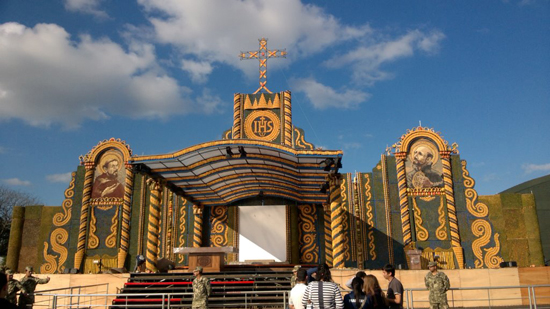
Above: Reredos of maize, Photo: Margaret Hebblethwaite
The theme of welcome was evident, also, in his early morning visit to the Bañado, the poorest area of the capital, along the banks of the River Paraguay, which suffered extensive flooding and displacement last year. But this time the welcome came from the inhabitants, the Bañadenses, who greeted him with an exuberant rendering of a song from the Misa Guaraní Pyahu: “Come, let’s sing, Francis…, we are all happy together”.
Fr Ireneo Valdez SJ, the parish priest, dressed in an informal baggy cardigan, told him, “Make yourself at home. Welcome home, Papa Francisco”.
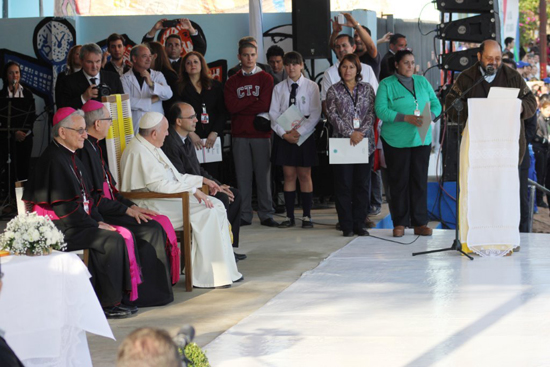
Above: Fr Ireneo welcomes Francis. Photo: Margaret Hebblethwaite
The Pope listened with rapt attention as two women from the barrio presented the reality of their lives and their struggles for the opportunity to study and to find work. Some 23,000 families live in these conditions. The principal industry of the Bañadenses is to sort through rubbish in search of glass, plastic and cardboard for recycling. When Angélica Viveros, from the Bañado del Sur, appealed on behalf of those “imprisoned unjustly for the massacre of Curuguaty”, there were cries of support from the crowd, and two banners could be seen with the question “What happened at Curuguaty?” The same slogan featured the night before, on the T-shirt of the Jesuit Pa’i Oliva, as all the Paraguayan Jesuits greeted the Pope in an unscheduled meeting at Cristo Rey church.
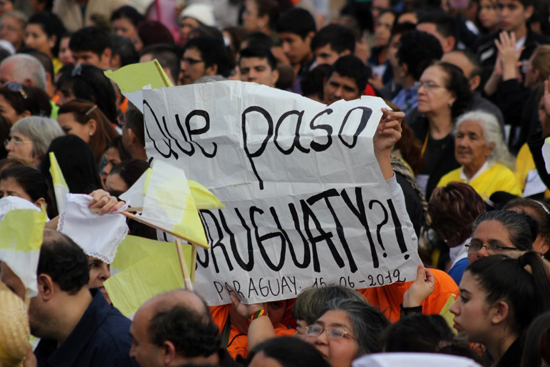
Pope Francis’ reply to the Bañadenses focused on the responsibility of Christians to respond to those who were in need. “A faith without solidarity”, he said, “is a dead faith. It is a faith without Christ, without God, without sisters and brothers”. Jesus showed solidarity, he said, in “choosing to live among us”, and he “had no problem in lowering himself, becoming humble”.

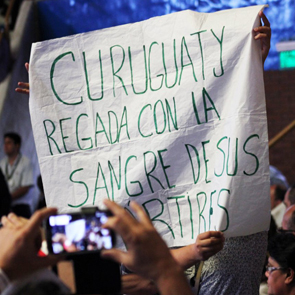
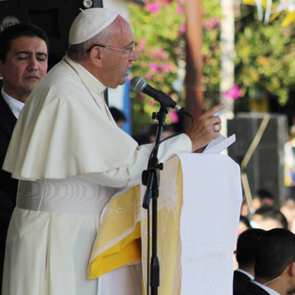

 Loading ...
Loading ...